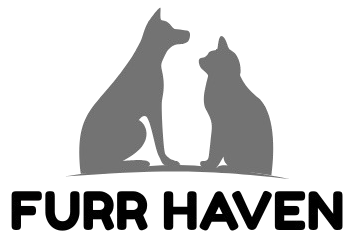
The Ultimate Guide to Shedding Season: Keeping Your Pet’s Coat Healthy | Furr Havens
Share
Prologue
Shedding is one of the most common — and most misunderstood — aspects of pet ownership. Every spring and autumn, households across the world transform into a canvas of fur. Owners sigh as they vacuum yet again, lint roll their clothes for the third time that morning, and brush dog hair off the sofa cushions. Yet beneath the frustration lies a simple truth: shedding is natural, healthy, and essential for your pet’s wellbeing.
Understanding why pets shed, how to manage it, and when to worry transforms the season from chaos to connection. With the right tools and strategies, shedding becomes not only manageable but an opportunity to bond with your companion. At Furr Havens, we believe in equipping owners with both products and knowledge to ensure every coat shines and every home stays harmonious.
1) Why Pets Shed: The Science of Coats
Fur is more than decoration; it is biology. Dogs and cats shed to regulate body temperature, replace old hair, and protect skin. Seasonal shedding — often called “blowing the coat” — prepares pets for climate shifts.
-
Double-Coated Breeds like German Shepherds, Huskies, or Golden Retrievers shed heavily twice a year, replacing dense undercoats with lighter layers.
-
Single-Coated Breeds shed more evenly throughout the year.
-
Cats may shed year-round indoors due to artificial lighting, which confuses their natural seasonal rhythm.
👉 Did you know? According to veterinary dermatology studies, up to 10% of excessive shedding cases are linked to underlying health conditions rather than seasonal changes.
2) Grooming Tools as Allies
Grooming is not vanity; it is preventative healthcare. Regular brushing reduces tangles, distributes oils, and prevents mats that can lead to skin infections.
Furr Havens Grooming Gloves:
-
Mimic the soothing sensation of petting.
-
Ideal for anxious pets who resist brushes.
-
Capture loose fur while massaging skin, improving circulation.
Deshedding Tools:
-
Designed to reach undercoats without harming the topcoat.
-
Reduce loose fur by up to 90% with regular use.
-
Especially effective during seasonal coat blows.
Checklist for Grooming Success
-
Brush outdoors to minimize cleanup.
-
Keep sessions short (5–10 minutes) to prevent overstimulation.
-
Reward with treats afterward to reinforce positivity.
3) Nutrition: Beauty Begins Within
A shiny coat starts with the diet bowl. Protein deficiency, lack of omega-3 fatty acids, and dehydration all increase shedding.
-
Omega-3 & Omega-6 Fatty Acids: Support skin elasticity and coat shine.
-
High-Quality Protein: Builds strong hair follicles.
-
Hydration: Prevents dry skin and brittle hair.
Case Example: One Labrador owner introduced a salmon oil supplement after noticing dull fur. Within eight weeks, shedding reduced significantly, and the coat gleamed with renewed luster.
4) Cleaning Strategies for Sanity
Even with perfect grooming, fur will appear. The key is proactive management:
-
Vacuum with pet-specific attachments twice weekly.
-
Lint Rollers or reusable fabric brushes for clothing.
-
Washable Throws on couches to catch hair.
-
Air Purifiers with HEPA filters reduce airborne dander.
Furr Havens Tip: Keep designated “fur-friendly zones” in the home where pets can lounge freely, making cleaning more predictable.
5) When Shedding Signals Trouble
Shedding alone is natural. Excessive shedding, bald patches, or irritated skin signal deeper issues.
Possible Red Flags:
-
Parasites: Fleas or mites irritate skin and cause scratching-induced shedding.
-
Allergies: Food or environmental triggers lead to patchy hair loss.
-
Hormonal Disorders: Thyroid disease alters coat texture and volume.
-
Stress: Anxiety can increase grooming, leading to thinning fur.
👉 Veterinary Note: Always seek professional advice if shedding seems abnormal. Early diagnosis prevents chronic conditions.
6) Turning Shedding into Bonding
What if brushing wasn’t a chore but a ritual? Many pets come to love grooming sessions when framed as affection. Turn on calming music, sit in a quiet spot, and use gloves as if you’re simply stroking your companion. Over time, your pet will eagerly approach you at the sight of the glove.
7) Do’s & Don’ts of Shedding Season
Do:
-
Groom regularly with proper tools.
-
Provide a nutrient-rich diet with fatty acids.
-
Maintain a calm environment during grooming.
Don’t:
-
Shave double-coated breeds (damages insulation and risks sunburn).
-
Ignore bald patches or irritated skin.
-
Over-bathe; this strips natural oils and worsens shedding.
8) FAQ: Owners Ask, Experts Answer
Q: Can diet alone stop shedding?
A: No. Diet improves coat quality but cannot eliminate natural shedding.
Q: How often should I groom during shedding season?
A: Daily for double-coated breeds, 2–3 times weekly for single-coated.
Q: Will deshedding tools hurt my pet?
A: Not if used correctly. Choose gentle, pet-safe tools like Furr Havens’ line designed to protect skin.
Q: Can supplements replace grooming?
A: No. Supplements enhance coat health, but grooming remains essential.
Epilogue / CTA
Shedding is not the enemy. It is a sign of renewal, a rhythm of nature that reminds us our pets are living, adapting beings. With grooming gloves, deshedding tools, nutrition, and proactive home care, owners can shift from frustration to joy.
At Furr Havens, our mission is to provide the essentials that turn shedding season into bonding season. Explore our grooming collection today, and let every brush stroke strengthen both coat and connection.
